CH. 12 Central Nervous System
1/137
There's no tags or description
Looks like no tags are added yet.
Name | Mastery | Learn | Test | Matching | Spaced |
|---|
No study sessions yet.
138 Terms
cephalization
concentration of nervous tissue in the head
cerebral hemispheres
diencephalon
brain stem
cerebellum
what are the adult brain 4 regions?
midbrain, pons, medulla oblongata
what does the brain stem consist of?
gray matter
NON-MYELINATED NEURONS and cell bodies
white matter
MYELINATED and NONMYELINATED AXONS
-fat/lipid with protein
basic pattern found in CNS
central cavity SURROUNDED by GRAY MATTER, WHITE MATTER external to GRAY MATTER
(pattern change ascending brain stem)
cortex
what the cerebral hemispheres (cerebrum) and cerebellum contain OUTER LAYER OF GRAY MATTER
spinal cord pattern
-inner gray matter
-outer white matter
cerebrum and cerebellum pattern
-islands of gray matter (nuclei) within white matter
-cortex of gray matter
ventricles
filled with cerebrospinal fluid
-lined with ependymal cells (neuroglial cells)
-paired lateral ventricles separated by membranous septum pellucidum
diencephalon
where third ventricle lies in
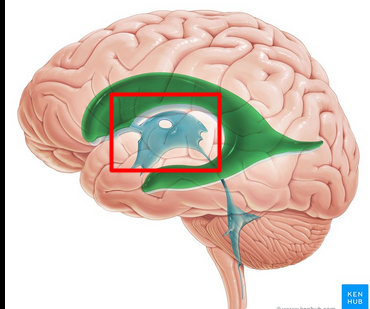
cererbral aqueduct
how third ventricle is connected to fourth ventricle

cerebral hemispheres
form superior part of brain
-account for majority of brain mass
gyri
ridges
sulci
shallow grooves
fissures
deep grooves
longitudinal fissure
seperates two hemispheres
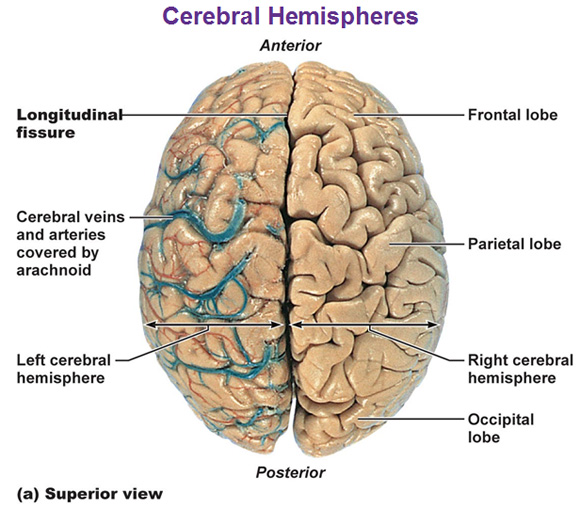
transverse cerebral fissure
seperates cerebrum and cerebellum
insula
lobe buried under portions of temporal, parietal, and frontal lobes
-not visible on surface
central sulcus
Separates precentral gyrus of frontal lobe and postcentral gyrus of parietal lobe

parieto-occipital sulcus
Separates occipital and parietal lobes
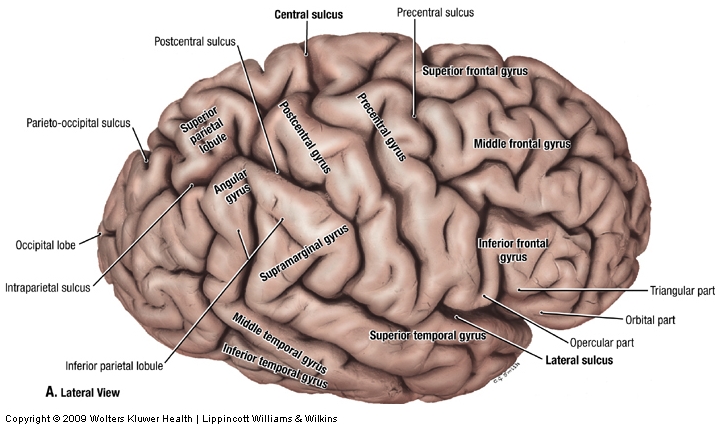
lateral sulcus
outlines temporal lobes
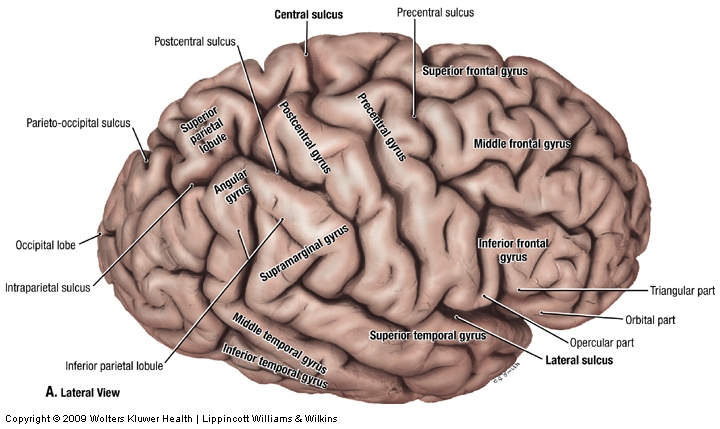
each hemisphere’s basic regions
-cerebral cortex of gray matter on surface
-internal white matter
-basal nuclei deep within white matter
cerebral cortex
“executive suite” of the brain
-site of CONSCIOUS MIND: awareness and sensory perception
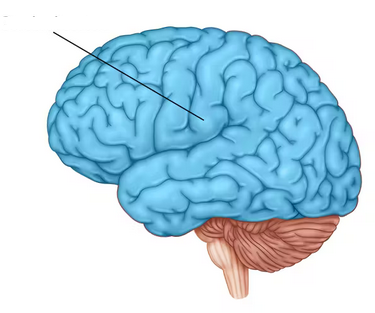
4 considerations of CEREBRAL CORTEX
Motor areas: control voluntary movement
Sensory areas: conscious awareness of sensation
Association areas: integrate diverse info into all one unique event
Lateralization: (specialization) of cortical function occure in only ONE hemisphere
contralateral
opposite (side of body)
primary (somatic) motor cortex
stimulate skeletal muscle
-pyramidal cells: large neurons in charge of allowig control of precise, skilled skeletal muscle movement
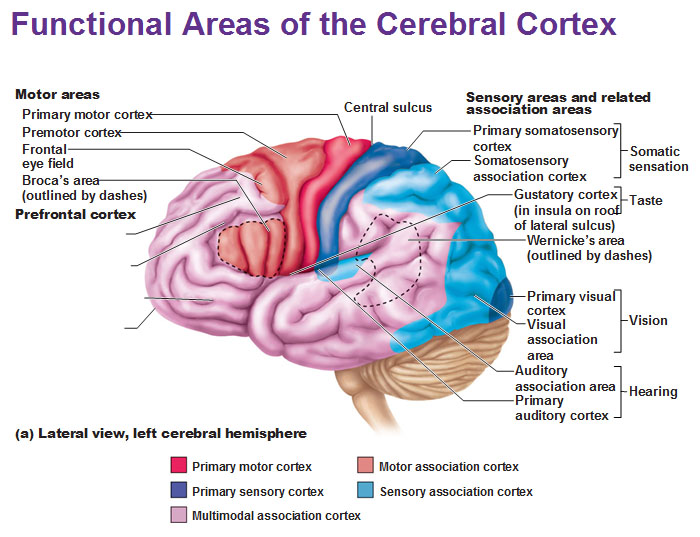
premotor cortex
helps plan movements
-ctrl learned, repeated, or patterned motor skills

broca’s area
in charge of communication; physically initiate speech and forming words
-planning speech

frontal eye field
control voluntary eye movements

stroke or muscle paralyzation
damage to PRIMARY MOTOR CORTEX results in…
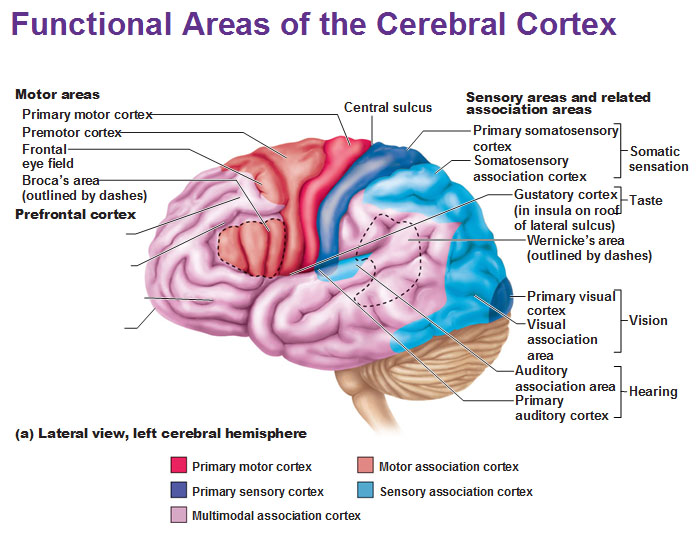
neural plasticity
ability of brain to change its function by changing its structure
-brain can rewire in certain cases to maintain function
primary somatosensory cortex
recieve sensory info from skin and proprioceptors (relating info relation to body position) of skeletal muscle, joints, tendons

primary somatosensory cortex
capable of SPATIAL DISCRIMINATION: identification of body region being stimulated (what is the cortex?)
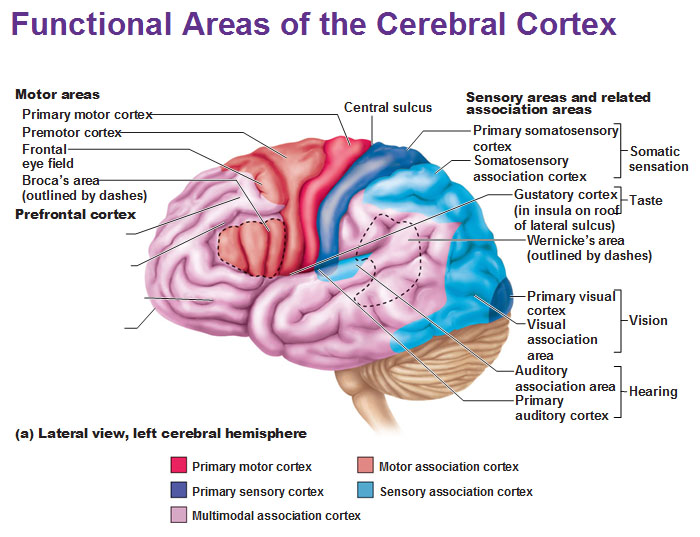
somatosensory association cortex
organize sensory neurons and understand object of sensation
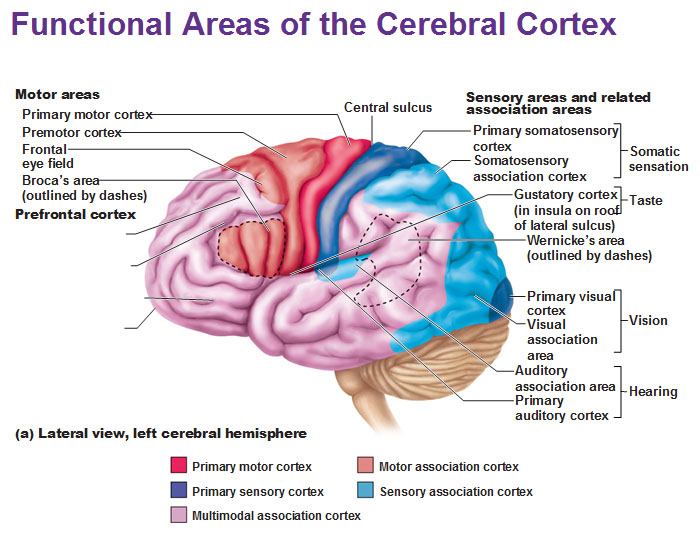
somatosensory association cortex
determines size, texture, and relationship of parts of objects being felt is the function of what cortex?
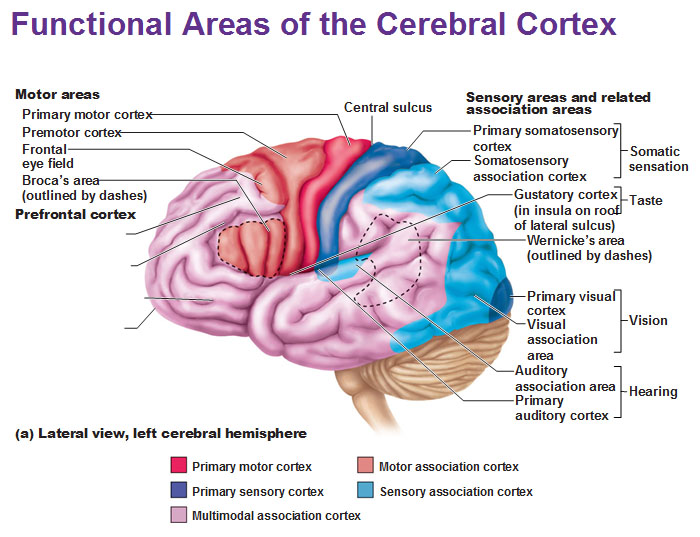
primary visual (striate) cortex
bipolar retina neuron = perceve changes in light
-recieve info from retinas
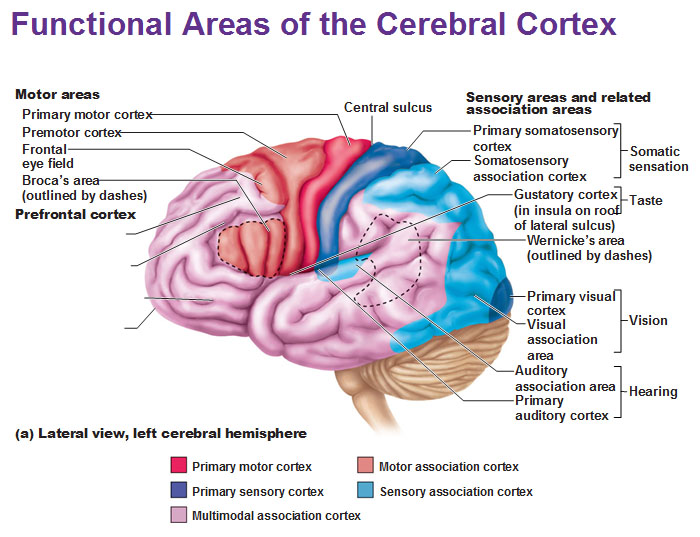
visual association area
-surrounds primary visual cortex
-uses past visual exp. to interpret visual stimuli
ex. ability to recognize faces
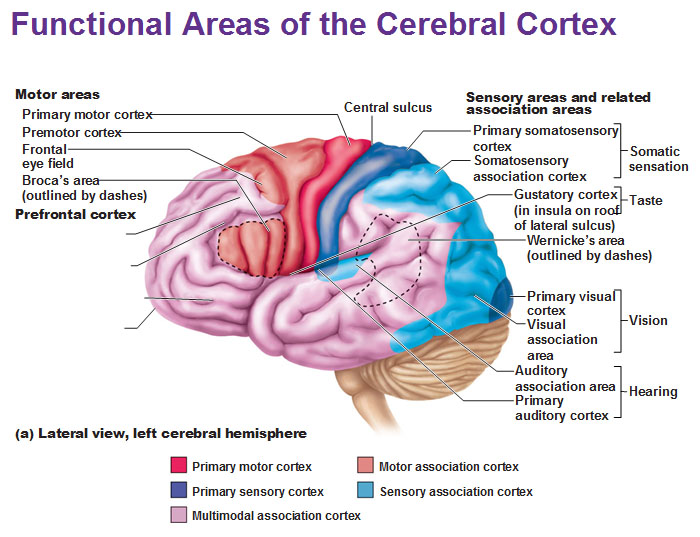
primary auditory cortex
interpret info from inner ear as pitch, loudness, location
-what u hear
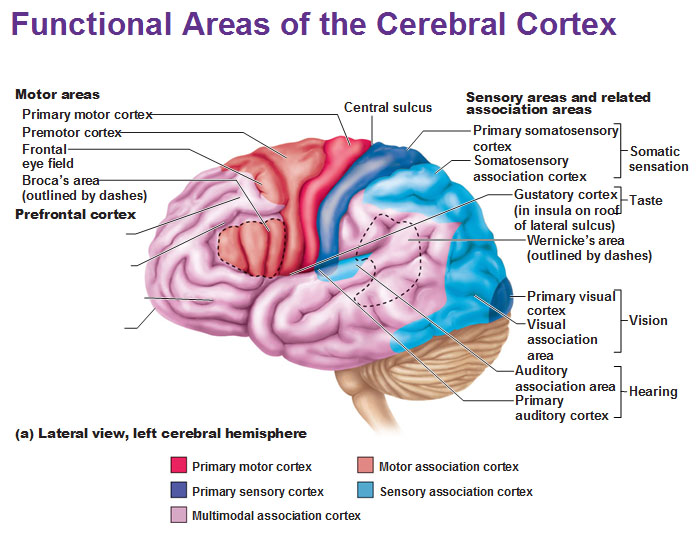
auditory association area
store memories of sounds and allows perception of sound stimulus
-what the sound means
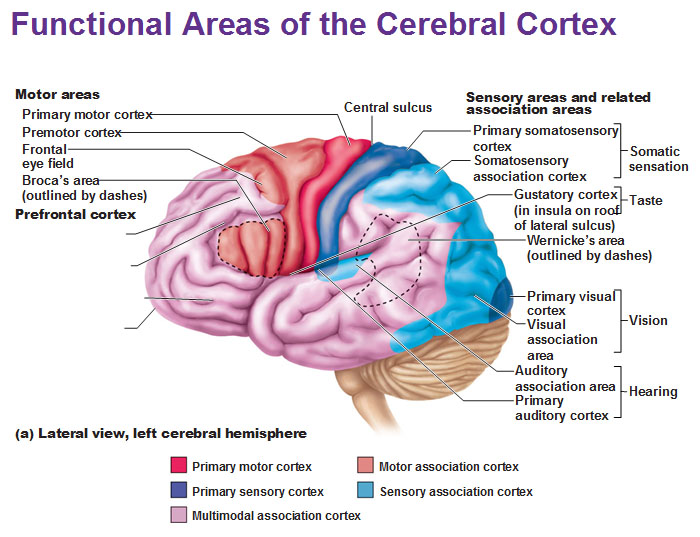
vestibular cortex
responsible for conscious awareness of balance (position of head in space)
-Consciously aware of position
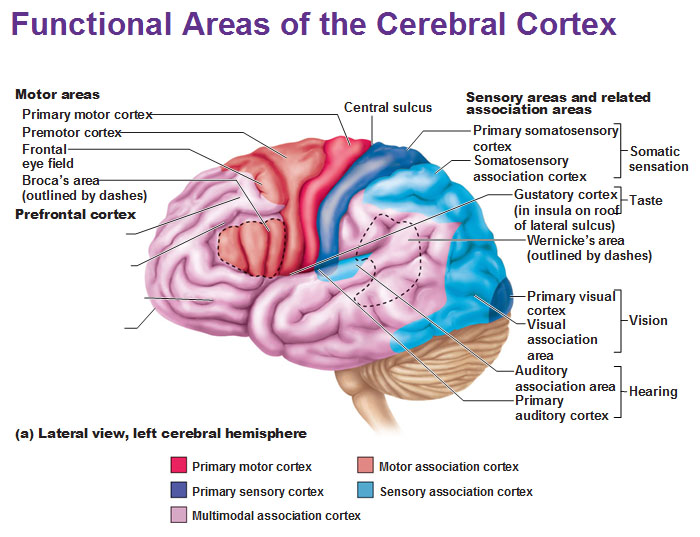
primary olfactory cortex
-conscious awareness of odors
-primative rhinencephalon, smell baby, food..
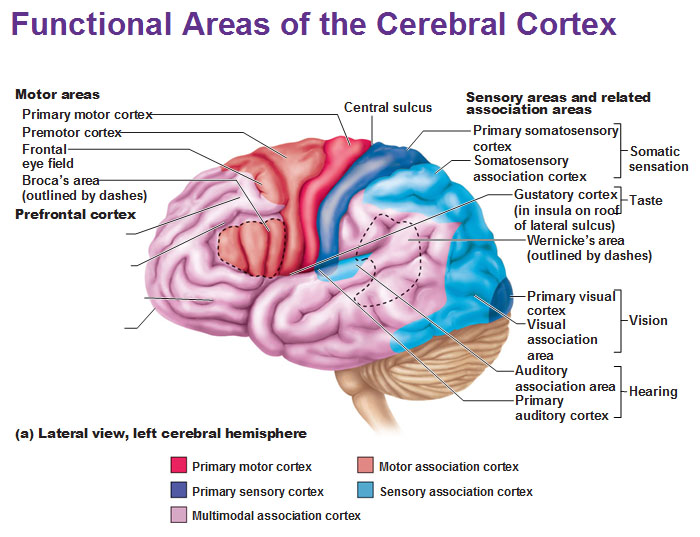
gustatory cortex
perception of taste
*taste and smell go together

visceral sensory area
Perceive fullness or stretch of organs

anterior of brain
where can you find motor areas of the brain?
posterior of brain
where can you find sensory areas of the brain?
damage to primary visual cortex
functional blindness; patient can see but do not comprehend what they are looking at
multimodal association areas
recieve inputs from multiple sensory areas and send outputs to multiple areas ex. we hear before we see
-gives meaning. connection to sensation, thoughts, emotions; makes us who we are
stages sensory receptors take through the brain
sensory receptors > primary sensory cortex > sensory association cortex > multimodal association cortex
prefrontal cortex / anterior association area
-unique personality
-form working memory
-reason + judgement

posterior association area
recognizing patterns and faces and localizing us in space
-”do i know what im looking at and where it is in relation to me?”
limbic association area
provides emotional impact that helps establish memories
cerebral dominance
hemisphere that is dominant for language (most humans have left sides dominance in brain, meaning they use right side of their body more)
lateralization
division of labor between hemispheres
-hemispheres are not identical
left hemisphere
control language, math, logic
(what is the hemisphere?)
right hemisphere
visual-spatial skills, intuition, emotion, artistic and musical skills
(what is the hemisphere?)
association fibers
horizontal running fibers that connect different parts of the same hemisphere
(white matter)
commissural fibers
horizontal fibers that connect gray matter of two hemispheres
projection fibers
vertical fibers that connect upper hemispheres with lower brain or spinal cord
basal nuclei
minimize unnecessary behaviors
-influence muscle movements, play role in cognition and emotion
Parkinson’s and Huntington’s disease
disorders of basal nuclei
-eg.. tremors
thalamus, hypothalamus, epithalamus
what are the 3 paired gray matter structures in the Diencephalon
thalamus
relay station for information coming in the cortex (afferent + efferent)
-sorts, edits, relays ascending input
-EVERYTHING goes through EXCEPT olfactory (smell) >goes to olfactory cortex
hypothalamus
-influences how endocrine system work
-maintains homeostasis of automatic nervous system (blood pressure, response to emotion), AND part of limbic system(pleasure, fear)
-regulate body temp, hunger/satiety, water balance/thirst, sleep-wake cycle
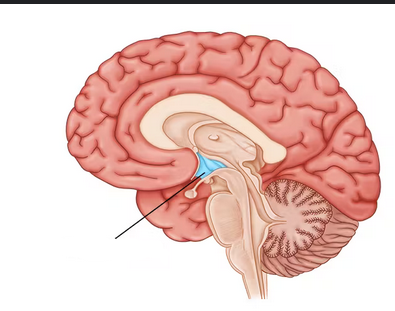
epithalamus
-contains pineal gland (secretes melatonin to regulate sleep-wake cycle; fall sleep)
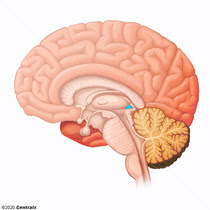
automatic behaviors necessary for survival
what does the brain stem control?
superior colliculi
-connect to corpora quadrigemina
visual reflex centers
-Reflexive action to what you see
inferior colliculi
-connect to corpora quadrigemina
auditory relay centers
-Reflective action to what you hear
substantia nigra
functionally linked to BASAL NUCLEI (ctrl uncontrolled contraction)
-black appearance in midbrain
-Parkinson’s disease is degeneration of this area
pons
maintains normal rhythm of breathing
medulla oblongata
medulla = automatic reflex center
cardiac center : adjust force and rate of heart contraction
vasomotor center : adjust blood vessel diameter = blood pressure regulator
respiratory center : ctrl rate and depth of breathing
other centers: vomiting, hiccupping, swallowing, coughing, sneezing
cerebellum
Provide precise coordinated movements of skeletal muscles
-plays MAJOR role in BALANCE
-process input from cortex, brain stem, and sensory receptors
limbic system
puts feeling to different stimuli - memory of an event
-EMOTIONAL RESPONSE TO ODORS
-hippocampus : tied to memory formation
Wernike’s area
involved in understanding spoken and written words > using correct words together
declarative memory
names, faces, words, dates
procedural memory
playing piano
motor memory
memory of motor skills (riding bike)
emotional memories
memory of experiences linked to an emotion (heart pounding when you hear a rattlesnake)
short term memory
temporary holding of info
long term memory
has limitless capacity for memory
automatic memory
subconscious information stored in long term memory (what ur brain is doing when ur asleep : sorting and filing)
memory consolidation
involve fitting new facts into categories already stored in cerebral cortex
fainting / syncope
brief loss of consciousness due to inadequate blood flow to brain
coma
Unconsciousness for extended period
brain death
irreversible coma (put on life support)
epileptic seizure
torrent of electrical discharges by groups of brain neurons
-incorrect pace of firing rate > throwing everybody else off accululation
absence seizure (petit mal)
mild seizure which expression goes blank for a few seconds
-seen in children
tonic-clonic seizure (grand mal)
most severe seizure; last lew mins
-victim lose consciousness
aura
sensory hallucination that may precede seizure
meninges
protective covering of brain
dura mater
“tough mother”
-strongest meninx
periosteal layer: attach inner surface of skull
meningeal layer: true external covering of brain
acrachnoid mater
middle layer with spinderweb-like extensions
-Separated from dura mater by subdural space
subarachnoid space
space in arachnoid mater that contains cerebral spinal fluid and largest vessels of the brain
pia mater
most delicate connective tissue that clings tightly to the brain; physically integrated in brain/spinal cord
meningitis
Inflammation of meninges, which can be deadly
-can swell on brain
cerebrospinal fluid
liquid cushion of constant volume around brain
-hep lighten weight of brain
-brain float
-SHOCK ABSORBER
concussion
temporary alteration in function to brain
“what day is it?” “idk”
contusion
Permanent brain damage
subdural / subarachnoid hemorrhage
pressure from blood may force brain stem through foramen magnum (death!)
cerebrovascular accidents
strokes - brain deprieved of oxygen